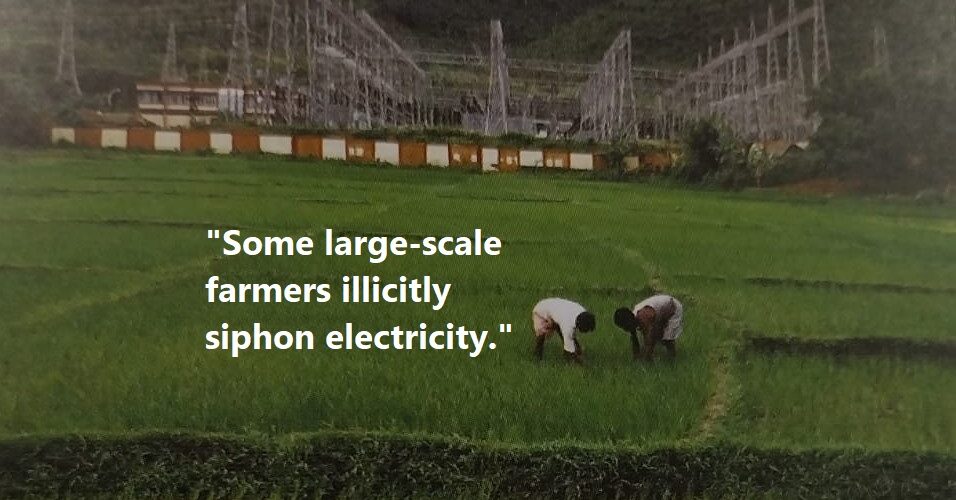As India prepares for another general election to the Lok Sabha, the world’s largest exercise in democracy takes place. Despite a rush of offers from all political parties, many remain empty rhetoric, unreachable in reality. Electricity, like food, is a valuable commodity in India. It has the capacity to alter election outcomes, as seen in Andhra Pradesh a couple of decades ago, and to influence public sentiment through freebies, as shown in Delhi’s AAP government’s pre-election position on electricity costs.
There are other examples, such as a major political figure-turned-chief minister restoring power to a building that had been cut off owing to power theft, highlighting India’s rooted link between politics and power theft. Unfortunately, this partnership strengthens during elections, with populist parties showering farmers, the critical constituency in many states, with incentives. This election season has shown the war for votes and the expansion of power theft tactics. Let’s look into the complex link between India’s general elections and the rise of electricity theft.
A recent survey on electricity distribution in India revealed a rich tapestry of interesting discoveries. Over the last decade, the Government of India’s efforts to expand energy availability to the population have received widespread recognition. However, the focus is on pockets of unelectrified homes concentrated in rural heartlands such as Uttar Pradesh, Madhya Pradesh, Rajasthan, Haryana, and Bihar.
In contrast, the lights in power provision emerge in the shape of Delhi, Kerala, and Gujarat, which demonstrate near-constant electricity delivery, a laudable accomplishment in urban as well as rural areas. A staggering 93 per cent of grid-electrified houses countrywide have metered connections, with 91 per cent receiving regular payment. This rigorous monitoring via metering and invoicing procedures is critical for revenue generation and financial stability in distribution firms (Discoms).
Despite progress, obstacles remain, particularly in rural areas where the threat of unmetered connections and faulty meters remains large, as in Jharkhand and Madhya Pradesh.
To illustrate the situation, a resident of Kharagpur village in Palamu district, Jharkhand, observed, “The meter sits in our house but remains uninstalled,” capturing the dismal reality experienced in many rural areas.
Against this backdrop, the following analysis is conducted. Many Discoms distribute electricity without meters, especially in rural regions where installing and maintaining individual meters is difficult and expensive. Despite regulatory reforms, poor metering remains a major issue in many locations. Instead of metered consumption, farmers usually pay fixed rates according to the size of their equipment. This practice is common, with agricultural customers accounting for around 37% of India’s overall energy usage, as per the data released by The Energy Research Institute (TERI). However, this flat-rate pricing scheme causes enormous financial losses in the electricity sector, damaging India’s energy economy. Subsidies supplied through this plan have unintentionally fuelled the fast development of groundwater irrigation, aggravating the demand in the energy sector.
In the 1970s, India made a conscious choice to avoid metering electricity supply for agricultural irrigation, in line with the Green Revolution goal of moving to high-yield crops that require regular water flow. Providing farmers with subsidized power was regarded as critical for increasing agricultural output. Over the years, Indian agricultural irrigation has grown tremendously to satisfy the different requirements of society. However, the lack of effective technological enforcement methods has created an incentive to exceed contracted flat-rate limits of power usage.
A study uncovered an alarming trend: Power theft peaks during the time of general elections. Interestingly, localities with higher levels of power theft prefer to re-elect the same incumbent to the legislature. This issue is especially prominent in agricultural areas where unmetered electricity is prevalent.
Furthermore, election seasons provide considerable hurdles for officials, who are concerned about the new administration. This uncertainty frequently results in the illumination of temporary electoral signboards, providing potential for increased power theft. Local officials usually oversee these improvised sites, worsening the issue. Unfortunately, those responsible for combating power theft frequently turn a blind eye to these illegal operations.
Power theft is common in underdeveloped nations and has significant economic and political implications. Using data from one of the biggest Indian states, it is shown that electricity theft is politically connected. It happens more frequently around election time when well-off farmers are permitted to use more than their allocated amount of private tube wells, which benefits the incumbent member of the legislative assembly. Although power theft is related to elections, both in terms of the volume of theft during election years and the electoral boost it affords incumbent MLAs, power also links state officials’ interests to those of well-off tube well-owning farmers.
According to many sources, farmers in Uttar Pradesh, as well as throughout India, are well-organized and vociferous supporters of electricity subsidies. Nonetheless, not every little interest group obtains its desired policy results against the bulk of admittedly disorganised customers, and not when their favoured policies are bankrupting the public sector.
In 2019, a political party in India’s capital city announced a game-changing initiative: power costs for up to 200 units will be waived. Consumers who use fewer than 200 units per month will not face any charges on their account. Those using up to 400 units will receive a 50% subsidy, up to ₹800 (9.6 USD)
The Delhi government earmarked ₹3,250 crore (395 Million USD) for power subsidies in the 2023-24 budget. According to the Delhi Government Performance Report for 2022, nearly three million families pay nothing, while 16-17 lakh households receive a 50% subsidy. Those who exceed the limit frequently seek to control their consumption using a variety of conservation strategies.
However, this wonderful gesture is not without obstacles. Some people use system flaws to steal electricity, causing abnormalities in the power industry. The connection between elections and pledges made by political parties frequently worsens these challenges, sharply underlining the agonising complexity of the energy distribution system.(Tamperfinder)













Add comment